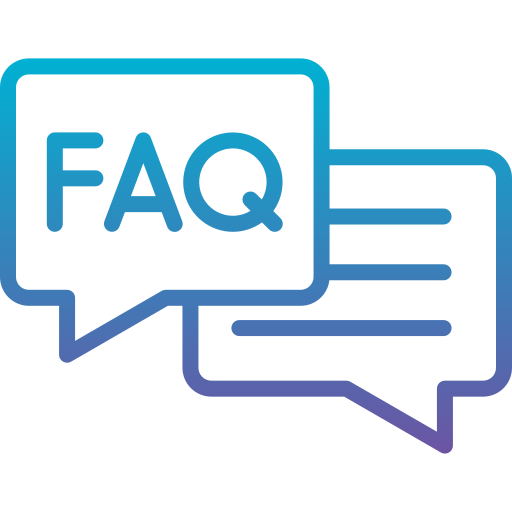I understand the challenge: cutting through the noise on Facebook Ads. Picture yourself solving that problem. Instantly showing viewers how your solution transforms their day isn't easy in a short feed scroll. You need visuals that resonate.
Turning complex value into simple, impactful stories for social feeds is key. I’ve gathered these Facebook Ad Video examples to illustrate how successful campaigns capture attention and drive action, offering real-world inspiration for your own impactful visuals.
It’s crucial to plan ahead when it comes to high-quality video production. Discuss with our team, how you can get visual style, budget, timeline in sync.
Jai Ghosh
Video Producer at Advids
Let's talk

How can I make Facebook video ads engaging in the first few seconds?
To make Facebook video ads engaging instantly, start with a compelling visual or question, immediately showcasing the product or benefit. Use fast cuts, dynamic motion, or surprising elements to prevent scrolling. Address a target audience problem upfront and ensure the opening is impactful even without sound, grabbing attention within the first few seconds on mobile.
How do I create Facebook video ads that work without sound?
Create Facebook video ads that work without sound by prioritizing strong visuals, graphics, and visual storytelling. Use clear captions for dialogue and key information, alongside text overlays highlighting messages and offers. Design motion graphics conveying meaning independently of audio, ensuring the core message and call-to-action are always visually apparent.
What is the ideal length for Facebook video ads in 2025?
For optimal performance in 2025, aim for shorter Facebook video ads, generally 15-30 seconds, for higher completion rates and attention, though length varies by objective. Reels and Stories favor highly dynamic videos under 15 seconds. Regardless of total duration, the most crucial information and hook must appear within the initial seconds for effectiveness.
Why is it important to optimize Facebook video ads for mobile?
Optimizing for mobile is vital because most users view Facebook on mobile, requiring mobile-first creative. Vertical or square formats fill more screen space, crucial for fast-paced mobile scrolling and sound-off viewing habits. Mobile optimization ensures better user experience, accommodates potential data limits, and leads to higher engagement and performance.
How can I use captions effectively in Facebook video ads?
Use captions effectively in Facebook video ads by adding them for all dialogue and essential info to boost completion rates and accessibility. Use readable fonts with good contrast, ensuring captions accurately reflect content without obscuring visuals. Captions are particularly important for mobile users viewing with sound off, enhancing understanding and engagement.
How does storytelling improve Facebook video ad performance?
Storytelling improves Facebook video ad performance by creating emotional connection and making ads memorable through relatable narratives. A clear story structure keeps viewers engaged longer, humanizes the brand, and makes complex messages accessible. Effective storytelling builds brand affinity and recall by showing the real-world impact of the product or service.
How should businesses approach Facebook Stories ads?
Approach Facebook Stories ads by designing for the full-screen vertical format (9:16). Keep ads short, dynamic, and fast-paced, under 15 seconds, integrating interactive elements like polls or swipe-up calls-to-action. Make them visually compelling and understandable without sound, using text overlays to blend into the user's native Stories experience.
What are the best practices for Facebook Reels ads?
For Facebook Reels ads, focus on ultra-short, dynamic vertical video captivating attention in the first 1-2 seconds. Use fast edits, text overlays, and movement within the 9:16 full-screen mobile format. Ensure the core message is delivered rapidly and effectively, leveraging visual elements to keep momentum and engage quickly in the fast-paced feed.
What are the recommended aspect ratios for Facebook video ads?
Recommended aspect ratios for Facebook video ads include 1:1 (square) and 4:5 (vertical) for the main feed, as they maximize mobile screen space. For Stories and Reels, 9:16 (full vertical) is standard. The choice depends on placement, but square often offers broad compatibility while vertical formats generally outperform horizontal on mobile feeds.
How can I effectively use calls-to-action in Facebook video ads?
Effectively use calls-to-action in Facebook video ads by making them clear, concise, and action-oriented, leveraging Facebook's clickable button. Visually reinforce the CTA within the video, placing it strategically, often towards the end but hinted at earlier. Ensure the linked landing page provides a seamless experience directly matching the ad's offer for better conversions.
Why short video ads work best
While short formats capture attention quickly on crowded feeds, their power truly unfolds through strategic execution. Crafting an effective Facebook Ad Video involves more than just brevity; it requires deliberate choices that guide the viewer towards action and demonstrate Tangible value within moments. Focusing on elements that resonate instantly ensures the brief viewing window translates into meaningful engagement and measurable results.
Demonstrating a product or service in real-world contexts makes its value immediately apparent, much like the clear contrast often presented in a before after video ad. Showing how something integrates into daily tasks or solves specific problems increases its relatability. Beyond just showing, understanding how people watch is crucial; analyzing data on Viewer behavior helps pinpoint exactly what holds attention and what causes drop-off, enabling continuous refinement for maximum impact.
Furthermore, consistently testing different creative approaches reveals what truly connects with the Target audience . A/B testing various aspects ensures optimizations are based on performance data , not just assumptions. Adapting the content's focus and presentation based on where the viewer encounters the ad?be it scrolling through a feed or actively seeking information on a landing page?enhances relevance and effectiveness.
- Ending videos with clear calls to action directs viewers precisely on the next step.
- Measuring the ROI connects video investment directly to Business outcomes like leads or reduced support needs.
- Incorporating Social proof builds instant credibility and trust with potential customers.
- Analyzing data provides granular insights for refining content and targeting.
By focusing on these strategic components, advertisers maximize the potential of short video formats.
Advantages of using square video ads
Square video ads offer distinct advantages on mobile feeds, primarily by maximizing screen real estate to instantly capture attention. This format demands that teams prioritize engaging viewers within the critical opening seconds. With many viewers watching without sound, incorporating clear Text overlays ensures key messages resonate. The square frame naturally lends itself to making these overlays easily readable. strategic placement of the Call to action within this focused view is also vital.
For teams creating a Product video ad , the Square format excels at Showcasing features within relatable contexts , demonstrating how a solution integrates into everyday tasks or workflows and provides tangible value. Incorporating social proof, such as mentioning user statistics or displaying recognizable customer logos, further builds credibility quickly within the confined space.
When developing a Lead generation video ad, employing specific, action-oriented calls to action becomes paramount, guiding viewers directly towards signing up or requesting information. Examples like " Request a Demo " or "Download the Report" provide clear next steps. Measuring the Return on investment for these ads involves tracking not just direct conversions but also the Value generated from better-informed prospects or reduced support inquiries resulting from clear explanations within the video.
Analyzing viewer behavior provides invaluable insights into what holds attention within a square video.
Testing different elements, such as the visual hook or the specific wording of the call to action, helps optimize performance for the mobile feed environment.
Understanding how viewers interact with the video helps refine content for maximum impact.
Optimizing video content means considering the platform's typical viewing habits, like watching without sound or needing to grab attention quickly.
Leveraging these strategic approaches within the square format empowers teams to create video ads that are not only seen but also drive meaningful engagement and deliver measurable results.
Creating effective vertical video ads
Creating impactful vertical video ads goes beyond simply orienting content vertically. It requires a thoughtful approach to capture attention and drive results within dynamic scrolling feeds. Focusing on the creative itself and how it performs is key to connecting with potential customers effectively.
Developing action oriented calls to action proves vital at the conclusion of a vertical ad. Rather than generic prompts, employ specific text aligning with the video's goal and where viewers are in their journey, such as "Start Your Free Trial" or "Download the Report." Demonstrating products in Real world scenarios shows relevance and increases Perceived value by illustrating integration into daily tasks or workflows.
Continuously refining creative relies on data. Analyzing viewer behavior through integrated tools reveals exactly which moments resonate or where interest drops. This granular insight allows for precise adjustments. Employing A/B testing on elements like the initial seconds, thumbnails, or even CTA variations provides valuable data on what truly engages the target audience and boosts conversions. Incorporating social proof, like displaying recognizable client logos or user statistics, quickly builds trust and credibility within the ad itself.
- Integrating social proof, such as brief glimpses of well known company logos using the product or citing statistics about satisfied users, quickly builds credibility.
- Optimizing for different platforms means considering viewer intent and viewing environment; a short video ad designed for a feed needs instant impact, while content on a Product page can offer more detail.
- Measuring success involves tracking production costs against the value generated, such as increases in qualified leads or decreases in support requests from better informed prospects.
- Experimenting with creative formats, perhaps a stop motion video ad, can help the content stand out in a crowded feed.
Ultimately, effective vertical video advertising is an iterative process of creating Compelling visuals and messaging, strategically placing clear calls to action, and using performance data to constantly refine the approach for maximum impact.
Making your video ad compelling without sound
Audiences scroll feeds quickly often without sound engaged. Crafting video ads compelling in silence requires a visual-first approach. Their message must land instantly using strong visuals and clear text overlays. Without audio cues, viewers rely entirely on what they see to understand the ad's purpose and Value proposition . Every frame counts in holding attention past those critical initial seconds.
building credibility visually helps connect with silent viewers. Showing products used in everyday scenarios makes their benefits tangible. They demonstrate utility without needing spoken explanation. Incorporating social proof elements like recognizable client logos or impactful user statistics can instantly build trust. Different formats serve various communication goals; a whiteboard video ad effectively illustrates concepts step by step, making complex information digestible through animation and on-screen text alone.
Optimizing for silent viewing environments means considering how videos appear on different devices. Creating a vertical video ad maximizes screen space on mobile, ensuring the visuals dominate the viewer's display as they scroll. Analyzing viewer interaction goes beyond simple play counts; understanding precisely which visual elements capture attention allows for informed improvements. A/B testing different visual hooks or text placements reveals what resonates strongest with the target audience.
- ensure calls action are visually prominent text using action verbs like "download report" "start free trial" matching viewer stage
- measure ad value correlating investment with business outcomes including qualified leads reduced support requests from informed prospects
- employ tools like heatmaps track viewer visual behavior revealing points where interest dips
- test visual components including thumbnail image initial frames text overlays call action placement
Focusing on powerful visuals and accessible text creates video ads impactful even when muted capturing audience attention driving desired outcomes.
Crafting captions that boost video ad engagement
Captions serve as essential partners to compelling video content on Facebook, significantly boosting engagement potential. While the video itself grabs initial attention and tells a visual story, well-crafted captions deepen understanding and guide viewers toward action. They ensure message clarity even when sound is off, a frequent viewing scenario, making an ad accessible wherever someone is watching. Thinking strategically about text accompanying the visuals elevates an ad from merely seen to truly impactful, driving stronger connections with the audience.
Effective captions help translate the visual narrative into tangible value. Demonstrating a product's function becomes clearer when the caption highlights the specific problem it solves, reinforcing the real-world scenario shown in the video. Aligning caption messaging with viewer journey stages ensures relevance. Measuring ad success links back to how effectively captions drive measurable actions, influencing outcomes like increased qualified leads or reduced support queries. Analyzing viewer behavior can inform caption adjustments, ensuring key information is prominent where attention is highest or clarifying segments where viewers drop off.
Integrating social proof through concise text, like mentioning satisfied users or familiar logos, builds immediate trust alongside the video's message. Consider a powerful before after video ad example; ensuring the caption clearly articulates the transformation viewers witness amplifies the ad's impact and credibility. Testing different caption variations through A/B testing is crucial, experimenting with wording, length, and placement. Optimize captions for various placements considering how they appear in feeds versus stories, and whether text overlays within the video are needed for sound-off viewing. A successful Facebook Ad Video example often features a caption that complements its pacing, providing crucial context or a direct path forward.
- Craft explicit calls to action guiding next steps
- Highlight product benefits within relevant contexts
- Weave in social proof elements naturally
- Continuously test and optimize text for platform and audience
Strategic captioning transforms video views into valuable business outcomes, ensuring the message resonates and prompts desired actions.
Where to place your call to action in ads
For video ads on Facebook, placing the call to action strategically proves crucial for guiding viewer action. While often appearing at the video's conclusion, consider integrating prompts at key moments when engagement peaks. Generic phrases like "Learn More" yield less impact than clear, action-oriented text. Tailor your calls to action, using text such as "Start Your Free Trial," "Request a Demo," or "Download the Report," aligning wording directly with the video objective and the viewer's likely stage in their journey.
Measuring success involves tracking advertising costs against value generated. This value extends beyond direct sales, encompassing increased qualified leads, shorter sales cycles from better-informed prospects, and even reduced support inquiries as users gain clarity on features from the video content. Presenting product features within relatable real-world scenarios significantly boosts viewer understanding and belief. Showing how a product integrates into existing workflows increases its perceived worth.
Analyzing viewer behavior offers powerful insights. Utilizing tools like heatmaps or attention tracking reveals precisely which parts resonate or where interest wanes, helping pinpoint confusing segments or drop-off points. Incorporating social proof, such as briefly showing logos of well-known users or citing user statistics, rapidly builds credibility and trust. Continuously testing different elements proves essential for optimization. A/B test thumbnail images, the initial critical seconds, various CTA wordings and placements, or even script variations.
Optimize content for different platforms, considering viewer intent and environment. Videos for social feeds require immediate attention, often understandable without sound through clear visuals and text overlays, and generally kept shorter. Conversely, a video on a product page assumes higher viewer intent, allowing for slightly longer, more detailed content. A demo video ad example effectively showcases functionality. An explainer video ad example clarifies value propositions efficiently. Understanding these nuances helps maximize each video's potential.
Hooking viewers within the first three seconds
Capturing attention within video’s initial moments requires deliberate strategy. Viewers scroll quickly, their feed a constant flow of content. Teams must therefore prioritize delivering immediate intrigue or tangible value. Successfully arresting the scroll hinges on visual impact and rapid relevance to their needs or interests. Analyzing audience data helps pinpoint exactly what resonates most in those critical first seconds.
Assuming viewers watch without sound mandates utilizing clear text overlays conveying core messages or benefits right away. Demonstrating a product within a real-world scenario quickly shows its immediate utility. This rapid contextualization is vital whether developing a lead generation video ad example seeking sign-ups or a product video ad example highlighting features. Showing how something integrates seamlessly into daily tasks increases its perceived value from the outset.
Incorporating social proof through brief flashes of trusted logos or user statistics can build credibility rapidly. Rigorous A/B testing of different opening scenes, text overlays, and value propositions reveals what truly grabs and holds attention. Refining these initial seconds based on performance data is paramount.
- Clearly define the single most important takeaway for the viewer within the first few seconds.
- Leverage insights from analyzing initial viewer behavior to continuously optimize opening frames.
- Ensure the call to action feels like a natural next step after receiving immediate value or intrigue.
- Visually reinforce the desired action within the video itself, making the path forward unmistakable.
Ultimately, a powerful hook swiftly translates initial interest into sustained engagement, paving the way for desired actions and contributing to measurable ROI.
A B testing your video ad creative
Optimizing Facebook video ad creative requires a systematic approach, moving beyond simply creating content to understanding precisely what resonates with audiences. This involves pitting different creative elements against each other in controlled experiments to determine which versions drive the best results. By identifying winning variations, advertisers can refine their strategy, allocate budget more effectively, and ultimately boost return on investment.
Measuring success goes beyond simple views; it connects ad spend to tangible outcomes. This might involve tracking the cost of creative production against the value generated, whether through an increase in qualified leads, a reduction in the sales cycle length due to better-informed prospects, or even a decrease in support ticket volume from users who clearly understood a product feature explained in the video. Using real-world scenarios and demonstrating features within relevant contexts makes a product tour more relatable and believable for testing purposes. Experimenting with how a product integrates into existing workflows or solves specific daily tasks for a user's industry increases its perceived value, offering clear test variables.
Analyzing viewer behavior provides granular data critical for refining creative. Tools can show exactly which parts of a video viewers watch, rewatch, or skip. This data is invaluable for identifying confusing segments or points where interest drops, guiding iterations for future tests. Incorporating social proof, such as brief flashes of well-known company logos that use the product or mentioning statistics about satisfied users, can quickly build credibility and trust; testing different forms or placements of this can yield significant lifts in performance.
- Testing variations of the call to action is fundamental; instead of generic prompts like "Learn More," experiment with action-oriented text like "Start Your Free Trial" or "Download the Report" relevant to the video's objective.
- Experiment with different video lengths and formats tailored for diverse placements, considering viewer intent and environments where sound may be off. A successful short video ad example might use text overlays and rapid cuts for mobile feeds, while a slightly longer version could reside on a product page.
- A/B testing different elements within the video itself – the thumbnail image, the critical first few seconds, or even subtle script variations – can yield significant insights into what captures and holds attention.
- Beyond standard video, experiment with different creative styles; a stop motion video ad example could stand out through its unique visual approach, making it a great candidate for A/B testing against live-action or animated alternatives.
Continuous testing ensures creative stays fresh and relevant, maximizing the impact of video ads across the platform.
Author & Editor Bio
A video producer with a passion for creating compelling video narratives, Jai Ghosh brings a wealth of experience to his role. His background in Digital Journalism and over 11 years of freelance media consulting inform his approach to video production. For the past 7 years, he has been a vital part of the Advids team, honing his expertise in video content planning, creation, and strategy.
His collaborative approach ensures that he works closely with clients, from startups to enterprises, to understand their communication goals and deliver impactful video solutions. He thrives on transforming ideas into engaging videos, whether it's a product demo, an educational explainer, or a brand story.
An avid reader of modern marketing literature, he keeps his knowledge current. Among his favorite reads from 2024 are "Balls Out Marketing" by Peter Roesler, "Give to Grow" by Mo Bunnell and "For the Culture" by Marcus Collins. His results-driven approach ensures that video content resonates with audiences and helps businesses flourish.




